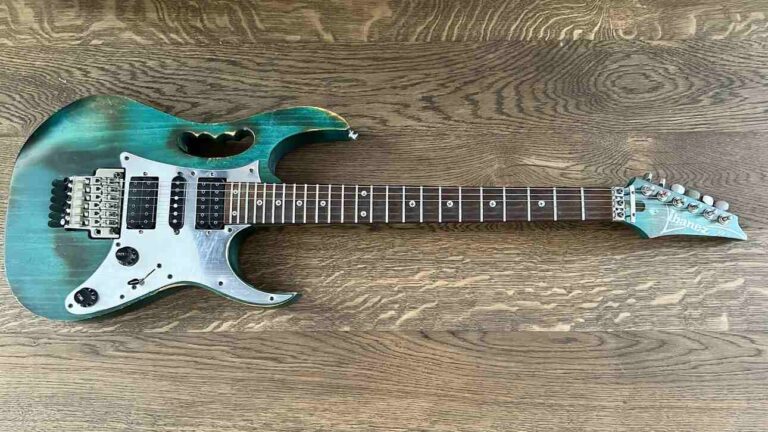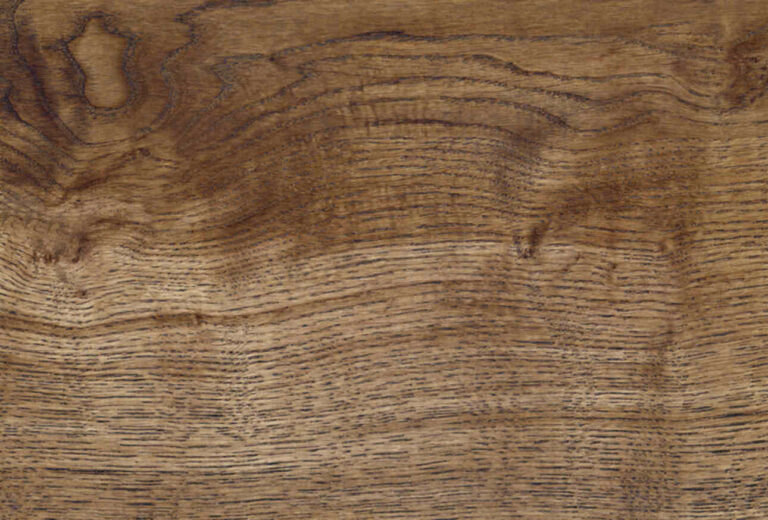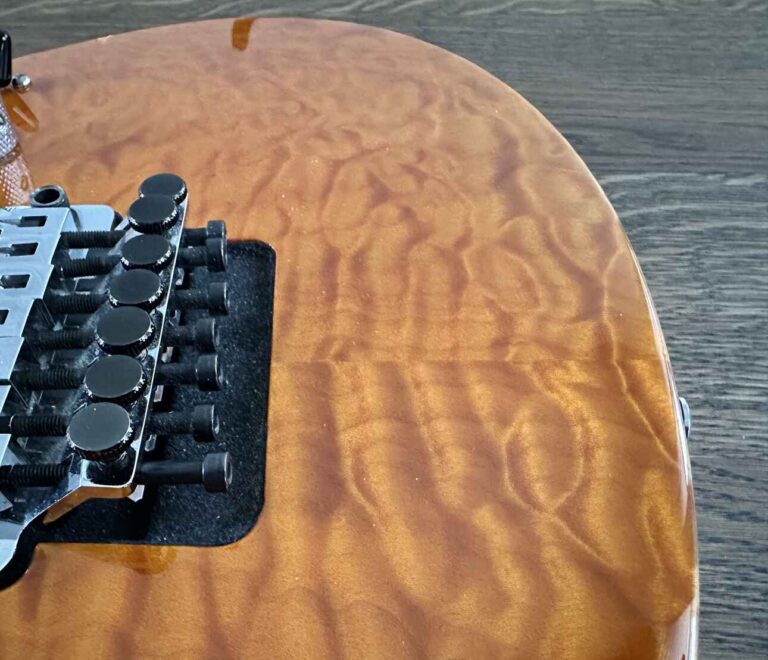Are One Piece Guitar Bodies Better Than Two Piece Bodies?
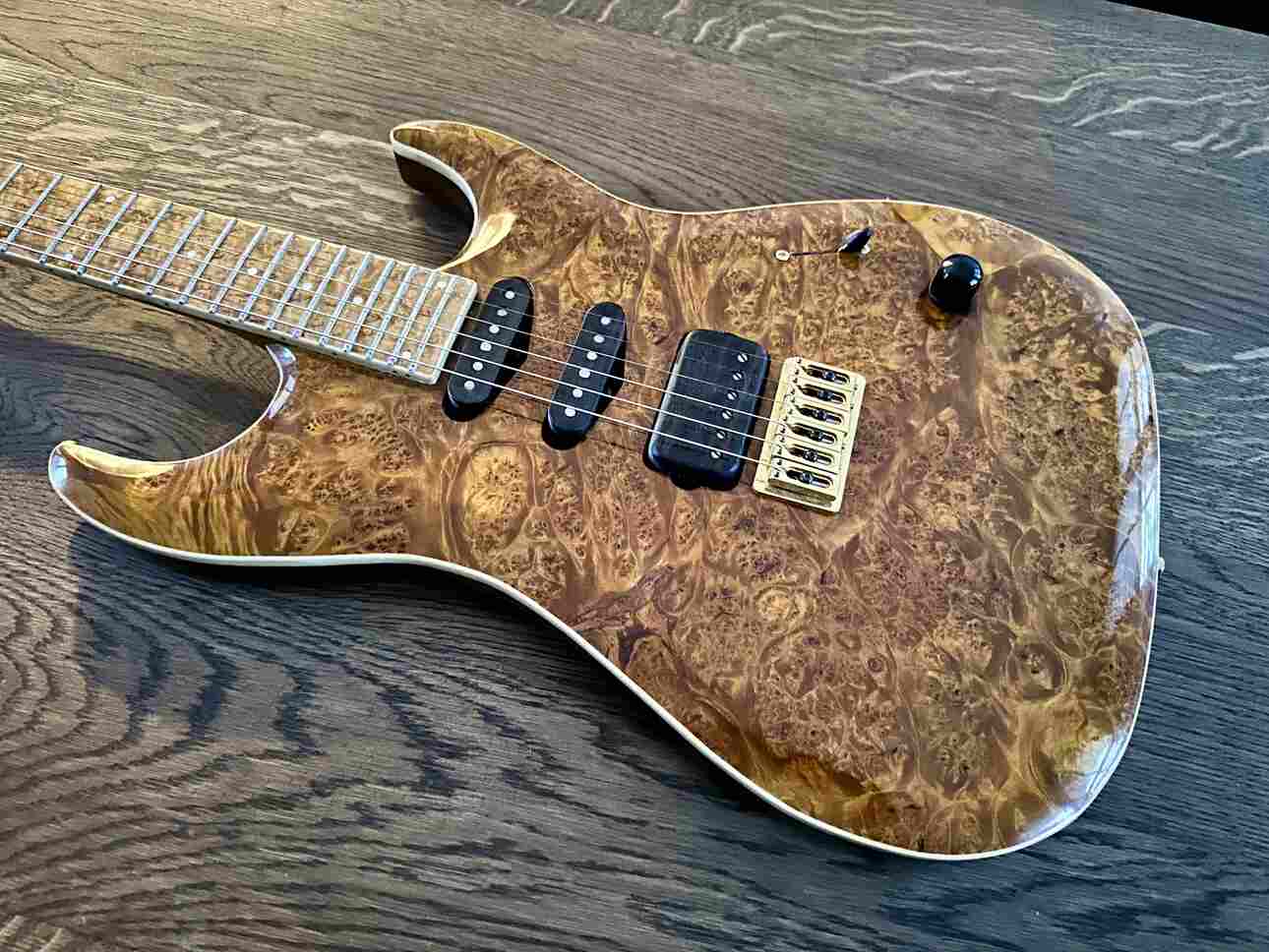
A one-piece guitar body is not necessarily better than a two-piece body. It’s just different and has different advantages and disadvantages. So the unsatisfactory answer to the question in the title is ‘it depends’. To understand what that means, I wrote this blog post.
I once had a custom guitar built with a one-piece burl maple top (see the picture above) and a one-piece koa body. I wanted it because I thought it looked better (still do, by the way).
Can I say that it sounds better than it would have with a two-piece body? Dunno. Can’t compare.
Heck, when I ordered the axe, I didn’t even know the difference between one piece and two-piece electric guitar bodies.
Now, I can tell you that one-piece bodies are praised for a fuller sound. But 2 piece bodies are known for even sustain and sometimes a brighter sound. This is because the stiffness of the joined pieces of wood can (possibly) affect the tone.
Customization looks and the guitar’s ability to resist bending and twisting are said to differ. Guitarists debate these points. In the end, it comes down to this: The number of wood pieces matters less than the skill in making the guitar and the wood’s quality.
But if you want to know all the ins and outs about one and two-piece guitar bodies, I invite you to read on!
Key Takeaways
- One-piece bodies often mean a richer sound, while two-piece bodies might give you more sustain;
- How the guitar is built affects its steadiness. Multi-piece bodies usually resist bending better;
- The wood’s quality and how well the guitar is made are key. They shape the guitar’s sound and strength, no matter the body’s build.
What Is a One-Piece Guitar Body?
A one-piece guitar body are made from one piece of wood. Unlike two-piece bodies, there are no joints and glue. The body has continuous grain.
What Is a Two-Piece Guitar Body?
A two-piece guitar body is made by joining two separate pieces of wood together along their edges to form the body of the guitar. Builders select the two pieces usually to match in terms of grain and resonance.
Fundamentals of Guitar Body Construction
When you’re picking a guitar, the body’s build is key. It shapes the sound and looks. The materials and design – whether 1 piece or multi piece – make a difference in how your guitar performs and resonates.
Materials and Resonance
The wood choice is key. Different woods have different sounds, looks, and weights. Mahogany is rich and warm. Alder is balanced. Maple is bright with long sustain. Ash or swamp ash is bright with a unique look.
In the end, it comes down to the wood’s ability to resonate. This is what shapes the tone of your guitar. So choosing the right wood is essential for the sound you want. But it doesn’t depend too much on whether you have a one-piece or two-piece body.
Choosing the right wood
is essential for the sound you want
One-Piece Versus Multi-Piece Design
A guitar might have a one-piece body or be made of several wood pieces glued together. A two piece body is by far the most common, but you could also lay hands on a 3 piece body and even a 4 piece body.
One-piece bodies are said to have better resonance and sustain. There’s a downside though. Finding a big enough piece without flaws can be hard and costly.
A two piece body is much easier to find and usually costs less. It’s made by joining two wood pieces to look seamless. Some say this doesn’t change the sound much compared to one-piece designs.
The sound difference is essentially a matter of taste. Some say they prefer one-piece bodies for their vibration.
The Pros of One-Piece Guitar Bodies
Choosing a guitar means considering the body’s build. One-piece bodies have some pluses over multi-piece ones.
As said, a one-piece body can resonate better and sustain longer because there are no joints and there’s no glue. Many players and luthiers alike are convinced that the uninterrupted wood grain in a one-piece body makes the tone better. It’s supposed to give your guitar a deeper and more natural sound.
One-piece bodies also look good. They have a smooth, even, especially nice look with natural finishes that show off the wood’s grain.
Durability and steadiness, however, are debatable. One-piece bodies might bend more under stress. But they don’t have glue in the joints, which can be weak spots in multi-piece bodies.
Here’s a quick overview of the differences:
- One-piece bodies might resonate better and have a warmer, more natural tone;
- Two or multi-piece bodies might have less sustain and a brighter, more focused tone;
- One-piece bodies are seamless;
- Multi-piece bodies are often more stable and less likely to bend.
These are general trends. The best thing is to try guitars of both types and see what you like.
Tonality and Sound Quality
Tonal Characteristics of Wood
Wood is the heart of your guitar’s tone. Each piece has a resonant frequency that shapes the sound of your guitar.
If you want to learn more about how wood affects the sound of your guitar, I recommend reading the tonewood guide on this website.
Influence of Body Construction on Sound
How a guitar’s body is made can change its sound. A one-piece body may resonate more freely. This could could mean a better tone. But a two-piece guitar body can be as good and often costs less.
It might have a slightly brighter sound as the joint could change how vibrations move through the wood, purportedly affecting the tone.

Durability and Stability
Warping and Long-Term Reliability
Warping can be a problem for guitar bodies. It can change how the guitar plays and how long it lasts. Multi-piece bodies are made to resist warping. The grains of the wood pieces often go in different directions. This helps spread out tension and makes the guitar less likely to warp.
For example, a guitar with a body made of two pieces of wood glued together may handle humidity and temperature better than a one-piece body. So a one-piece body might warp more easily.
Construction and Environmental Impact
Since multi-piece bodies are often made by joining pieces of wood along their edges, this is a more economical way to use wood. In other words, finding a big, perfect piece of wood for a one-piece body is harder and often wasteful.
Multi-piece bodies let builders use smaller, easier-to-find wood pieces. They carefully join them, limiting the impact on tone and sustain.
Aesthetic and Customization
Visual Appeal and Finishing
One-piece body guitars often look smooth and even. This can make the finish look better and let the wood’s natural beauty shine. This is especially true with clear finishes.
A two-piece body may have a joint line or different grain patterns. Some don’t like it that much. That’s exactly why I wanted a one-piece body custom guitar.
Accessibility for Custom Builds
For custom builds, many pieces of wood can give more options. It’s easier for builders to find smaller wood pieces. It makes two-piece bodies or those with more sections a practical choice for custom projects.
Multiple pieces allow for different wood combinations. You can use them to create specific sounds or unique visual effects. This modular building approach gives you more options when designing your guitar.
Does the Number of Pieces in a Guitar Body Affect Tone Quality?
As discussed above, the number of wood pieces changes the tone quality. But the effect is often subtle and personal. Here are the factors that make the difference:
Glue Joints: A one-piece guitar body has no glue joints. Some believe it allows for better energy transfer. More pieces mean more glue joints, which can dampen vibration.
Wood Characteristics: Each wood piece has its own properties that affect tone. A single piece may be more consistent. A two-piece body can blend different tonal characteristics.
Sustain: Glue might affect vibration and sustain. But luthiers’ improving skills have lessened this. It makes the sustain difference between one-piece and two-piece bodies often small.
Here’s a quick summary:
- One-piece bodies have no glue joints and potentially higher wood consistency;
- Two-piece bodies have glue joints and varying wood consistency;
- Tone and sustain are thought to be clearer in one-piece bodies. It’s slightly affected in two-piece bodies.
Is There a Difference in Durability Between One-Piece and Multi-Piece Guitar Bodies?
Multi-piece guitar bodies have a key advantage in durability: they’re usually more stable. This design better resists warping from environmental changes like humidity and temperature.
By spreading stress across multiple seams, multi-piece bodies can keep their shape and structure longer. One-piece bodies can warp or twist more easily without proper care.
Here’s a comparison:
- One-piece bodies look great with fewer seams but can warp or twist more over time;
- Multi-piece bodies have increased durability. They also resist environmental changes better but may have less resonance. Though this is debated.
Your choice may also depend on the wood type and how well the guitar is built. Opinions on multi-piece body tone impact are mixed. Some say the differences are small or even non-existent.
How Does the Construction of a Guitar’s Body Impact Its Performance?
The guitar body’s materials and construction shape its sound and playability.
Material: The wood affects the guitar’s tone. Different woods have different densities, which change sustain and resonance. For example, hardwoods like maple give a bright tone with long sustain. Softer woods like a basswood body or a swamp ash body give a warmer tone.
Construction: A one-piece body is often praised for its resonance and sustain. This is because there are no joints to dampen vibration. A two-piece body can be as good if it’s well-made and is often cheaper.
Tonal Quality: Your playing style should match the guitar body’s construction. If you like sustain and resonance, a one-piece body might be better.
Weight: Think about the guitar’s weight. Solid pieces CAN be heavier, which might affect comfort during long sessions.
Every piece of wood is different so a proper comparison is pretty much impossible.
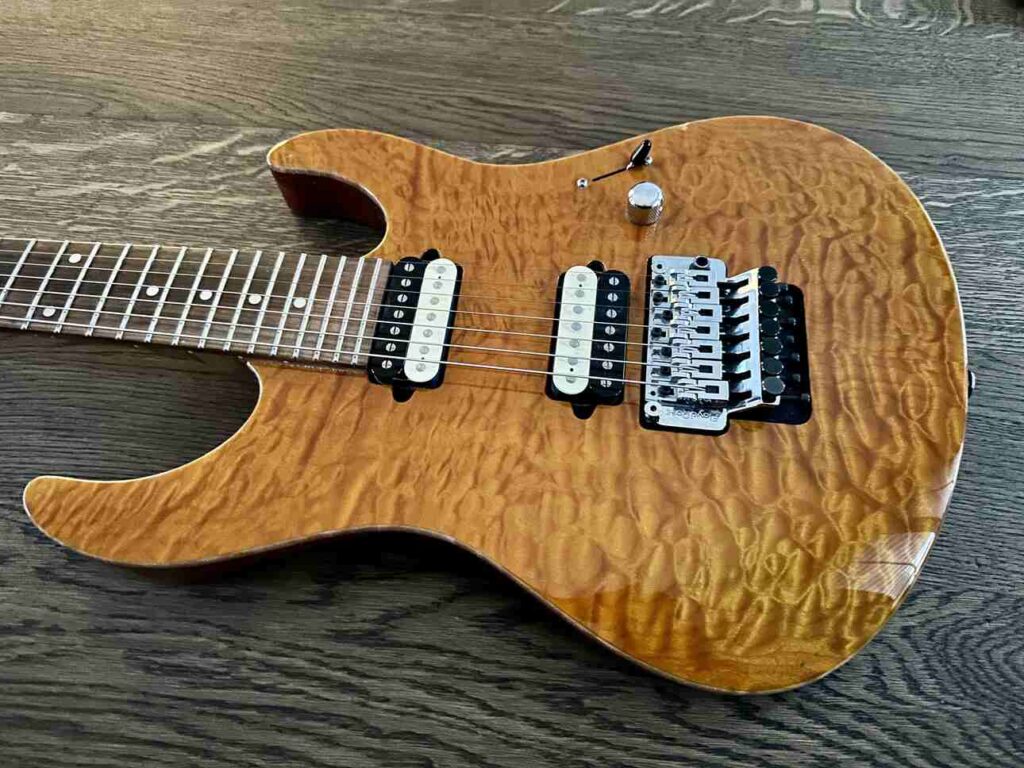
Why Are Most Guitar Tops Made From Two Pieces?
Guitar tops are usually made from two pieces for several reasons:
Availability of Materials: Finding big, high-quality wood pieces for one-piece tops is hard and costly. Two pieces make getting the right size, grain, and defect-free wood easier.
Stability and Seasoning: Two pieces can be bookmatched for a symmetrical look and better wood stability as it seasons. This reduces warping chances.
Tonal Consistency: A well-made two-piece top can sound as good as a one-piece top. The center seam shouldn’t affect the sound much when glued well.
Sustainability: Using two smaller wood pieces is more sustainable. It lets luthiers use wood more efficiently, saving resources.
You’ll find guitars with both one-piece and two-piece tops. For example, many classic Martin models have two-piece tops, which are renowned for their sound.
The same goes for most electric guitars, such as vintage Fender Stratocasters and Telecasters. A Strat or Tele from the ’50s often has a three piece body. A Les Paul body is also usually two-piece.
A one-piece design is sometimes chosen for acoustic guitar backs, like in some Taylor models.


